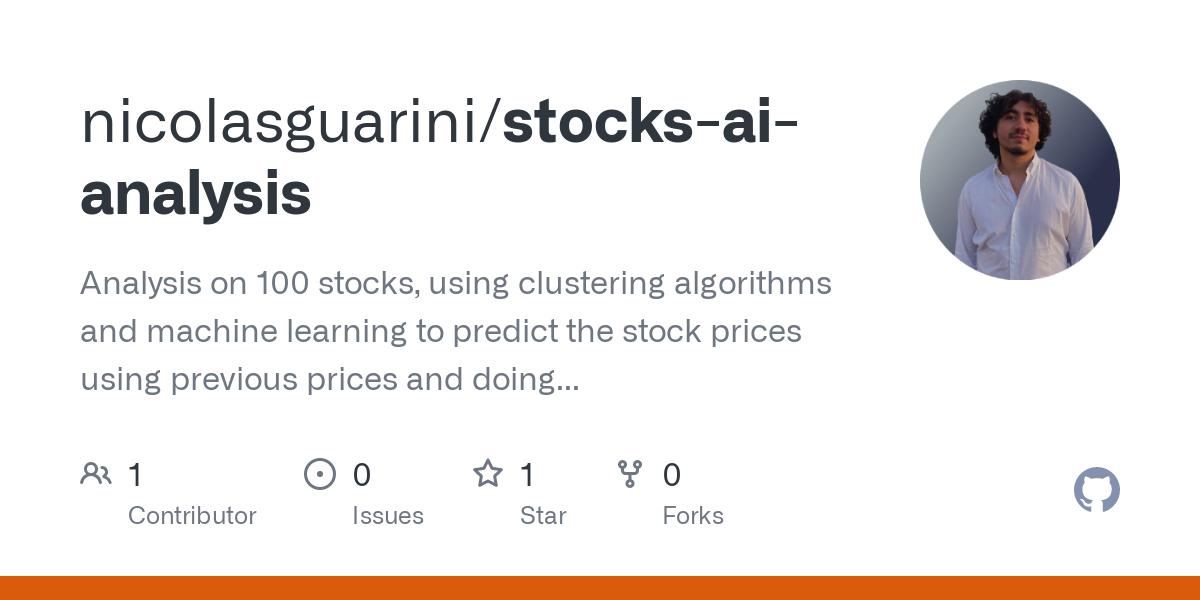20 Handy Reasons For Choosing AI Stock Predicting Websites
20 Handy Reasons For Choosing AI Stock Predicting Websites
Blog Article
Top 10 Tips For Taking A Look At The Cost And Price For Ai Stock Predicting/Analyzing Platforms
The price and cost of AI-based stock predicting/analyzing trade platforms is crucial to avoid unexpected costs or hidden fees. Pricing structures can vary significantly, and knowing exactly what you're paying for is essential to make an informed decision. Here are 10 top tips for evaluating pricing and cost.
1. Learn more about the pricing structure
Subscription based: Find out if the platform charges monthly or annually, and what features are included in each tier.
Pay-per-Use: Find out if the platform charges per use (e.g. amount of trades executed, data requests or predictions).
Freemium: Check the extent to which a platform provides a limited free tier and adds additional charges for premium features.
2. Compare Pricing Tiers
Check out the features included in each price level.
Scalability: Make sure your pricing levels match your requirements, whether you are an individual trader or a professional.
Upgrade flexibility: See if you can easily upgrade or downgrade your plan when your needs evolve.
3. Evaluate Hidden Costs
Data fees: Check whether the platform charges additional for access to premium data (e.g. real-time data, advanced analytics).
Brokerage costs Check to see whether the platform is charged additional fees to execute trades or connect with brokers.
API usage: Check whether there are additional costs for API access or high-frequency API usage.
4. Demos as well as Trials are Available for Free
Trial period. Look for platforms offering trials or demos so that you can try their capabilities before you commit.
Limitations of the trial Verify if it includes all features or if there are limitations regarding the functionality.
No-commitment option: If you don't like the platform, you can cancel it without any charge.
5. Take a look at the latest deals and offers
Discounts for annual subscriptions: Check whether the platform offers discounts on annual subscriptions when compared to the monthly plan.
Referral programs: Check whether the platform offers discounts or credits for referring other users.
Prices for institutions: If you are a part of an organization which is larger, inquire about pricing for bulk orders or institutions.
6. How to Evaluate Return on Investment (ROI).
Cost vs. value - Decide if the platform's capabilities, features, and predictions are worth it. It can save you money or make better trading strategies.
Performance track record: Research the platform's success rate or user reviews to assess its potential ROI.
Costs of other platforms: compared the costs of the platform to the potential cost of not making use of it (e.g. missed opportunities, time spent on manual analysis).
Review Cancellation/Refund Policies
Terms of cancellation: Be sure you're able end your contract without having to pay any hidden fees or penalties.
Refund policy Check what the policy is for refunds. you for unused portions.
Auto-renewal. Find out if the platform automatically renews your subscription. If it does then you'll have to figure out how to stop it.
8. Price transparency is essential.
Clear pricing page: Make sure that the platform has transparent and clear pricing page, with no hidden fees.
Customer Support: Call Customer Service for clarification of any unclear pricing information or added costs.
Terms of the contract: Make sure you understand the service terms and any penalty.
9. Check out your competition
Comparing the features and prices of different platforms against their rivals can help you find the best deal.
User reviews: Read feedback from the users about the platform and determine whether it's worth the money.
Market positioning: Determine whether it's priced at an upper-end, mid-range or low-cost choice and if it is in line with what you expect.
10. Calculate Long-Term Costs
Price increases: Find out if the platform has a history of price increases and the frequency at which this happens.
Features added - Find out if new features are included in your current plan or if an upgrade is needed.
Costs of Scalability: Ensure that the pricing of your platform is reasonable as your trading activity or needs for data increase.
Bonus Tips
Try multiple platforms. Compare the capabilities and benefits of multiple platforms by testing their capabilities during free trials.
Negotiate your pricing. If you're a part of a larger institution or you're using the product in large quantities, discuss pricing options that are custom.
You can find free educational tools on various platforms.
If you follow these guidelines, you will be able assess the cost, pricing and characteristics of AI platform for trading stocks. A well-priced platform should provide a balance between the affordability and features, allowing you achieve the best results from your trading. View the top ai stock predictions url for blog examples including chart ai trading, ai trading, ai stocks, ai stock trading app, trade ai, artificial intelligence stocks, ai stock trading bot free, ai stock price prediction, ai stock prediction, ai for copyright trading and more.
Top 10 Ways To Evaluate The Speed And Latency Of Ai Stock Trading Platforms
Latency and speed are crucial elements when it comes to evaluating AI stocks and analyzing trading platforms, particularly for active traders, algorithmic traders and high-frequency traders. Milliseconds aren't the only thing that can impact the execution of trades and even profitability. These are the top 10 tips for assessing the speed and latency of these platforms:
1. Evaluate Real-Time Data Feeds
Speed of data delivery Make sure your platform provides live data (e.g. sub-millisecond delay).
Data source closeness: Determine whether servers are in proximity to major exchanges.
Data compression: Verify whether the platform is using effective data compression techniques to speed up data delivery.
2. Test trade execution speed
Processing time for orders: Check how quickly the platform handles and executes trades when you submit an order.
Direct market access (DMA). Make sure the exchange you're using has DMA. DMA allows orders sent directly to an exchange to be processed without any intermediaries.
Reports on execution. Check if the platform offers detailed execution reports. These reports must include timestamps on order submission, confirmation, and fill.
3. Review Platform Response
Speed of the user interface (UI): Measure how quickly the platform's user interface responds to your inputs.
Chart updates: Make sure you check that charts and visuals are updated in real-time, without delay.
Performance of mobile apps. When using an app for mobile, you should ensure it's running as fast and smoothly as the desktop version.
4. Check for Low-Latency Infrastructure
Location of servers The platform is running a low-latency server located near exchanges and financial hubs.
Find co-location options. These services allow you to host your algorithms near the exchange.
High-speed network: Verify whether the platform utilizes high-speed fibre-optic networks, or other low latency technologies.
5. Evaluation of Simulation and Backtesting Speed
Check the speed at which your platform can analyse and analyze past data.
Simulation latency: Verify that the platform is able to simulate trading in real-time without any noticeable delay.
Parallel processing: Check whether your platform supports parallel processing or distributed computing to speed up complicated calculations.
6. Measure API Latency
API response time It is the time at that an API platform responds to requests.
Rate limits. Verify whether there are acceptable limits for the API. This can aid in preventing delays during high-frequency transactions.
WebSocket: Check whether the platform supports WebSocket protocols which permit streaming data in real time with low latency.
7. Test platform stability under load
High-volume trading: To test the platform’s flexibility and stability, try simulated high-volume scenarios.
Test your platform in periods of market volatility.
Use the tools on the platform to stress-test your strategies under extreme conditions.
8. Review Connectivity and Network
Internet speed requirements: Ensure your internet connection is at the speed recommended by your internet provider to achieve optimal performance.
Reliable Connections: To minimize delay, verify that your platform supports redundant internet connections.
VPN latency: When using a VPN platform, check whether the latency is high and also if there are alternative options.
9. Check for Speed Optimization Features
Pre-trade Analytics: Be sure the platform has pre-trade analytics to improve the routing of orders, execution speed and many other aspects.
Smart Order Routing (SOR). Verify that the platform is using SOR in order to find the quickest and most cost efficient execution venues.
Monitoring latency: Determine if the platform provides tools to analyze and monitor the latency in real time.
10. Review User Feedback and Benchmarks
Reviews from users: Perform studies to determine the platform's speed and latency.
Third-party benchmarks: Seek out independent benchmarks or reviews that compare the speed of the platform with competitors.
Case studies: Contact the platform to see if it has cases studies or reviews that show its capabilities for low latency.
Bonus Tips
Trial period: Take advantage of a free trial or demo to evaluate the platform's performance and latency in actual situations.
Customer Support: Verify that the platform can offer assistance for problems related to latency or optimize.
Hardware requirements. Examine whether a particular platform requires special hardware (e.g. an ultra-fast computer) to function at its maximum speed.
With these suggestions, it is possible to precisely assess the speed, latency and precision of AI software for analyzing and predicting stocks. This will enable you to select a system that meets your needs for trading as well as reducing any delay. The need for low latency is vital for high-frequency traders and algorithmic traders. Even minor delays can have a huge impact on profitability. Read the best link for ai investment platform for site tips including chart analysis ai, best stocks to invest in, ai stock trading, best ai copyright to buy, ai investment stock, best ai copyright, ai stock trading app, best ai copyright to buy, ai stock prediction, ai investment stock and more.